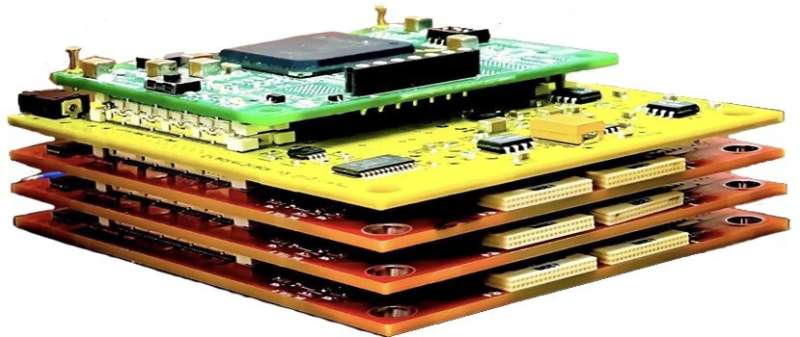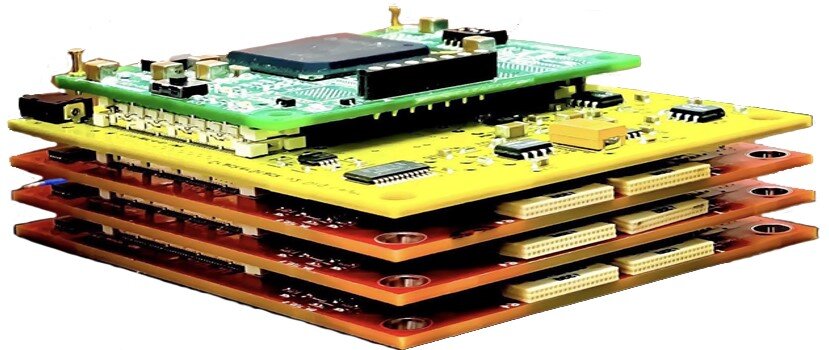
New technologies can greatly advance research in various fields, including medicine and neuroscience. In recent years, for instance, engineers have created increasingly sophisticated devices to record brain activity and other biological signals with high precision.
A multi-disciplinary research team at University of California, Los Angeles (UCLA) and other institutes in the U.S. have recently developed the Neuro-stack, a new wearable technology that can record the activity of single neurons in the brain as a human being is walking or moving. This device, presented in a paper published in Nature Neuroscience, could help to gather valuable insight about neuronal activity during walking, while also potentially improving treatments for brain disorders.
“Our study was motivated by the need for smaller size and more flexible devices for clinical neuroscience,” Dejan Markovic, one of the researchers who carried out the study, told Medical Xpress. “Our primary objectives were to make a device that is small enough to be wearable, for mobile experiments, and to provide broadband recordings including local field potentials and single units.”
Neuro-stack, the device created by Markovic and his colleagues, is roughly the size of a stack of cards, which is far smaller than existing devices for recording single-neuron activity. This makes them particularly suitable for mobile experiments, in which human participants are moving or completing dynamic tasks.
“Simply put, the device listens to the brain and talks to the brain,” Markovic explained. “Its most unique feature is the ability to record single neurons in freely moving humans. Another important feature is a highly customizable stimulation shaping as well as timing of the stimulation relative to phase of theta activity.”
The researchers’ device is based on ultra-low power and area integrated circuits. When humans are wearing it or holding it in their hand, the device records the activity of single neurons with high resolution.
In addition, the Neuro-stack system can also stimulate neurons in the brain, through a series of strategically positioned electrodes. These stimulations can be easily and remotely programmed to investigate or treat specific brain conditions.
“The most important contribution is the ability to explore brain function during naturalistic behaviors in humans at the level of single neurons,” Markovic said. “Such studies were only possible in animal models before, so this technology provides an opportunity to bridge decades of neuroscientific findings across species.”
Markovic and his colleagues initially tested their device in a laboratory setting. After validating its design, they carried out a series of real-world evaluations on patients diagnosed with epilepsy.
These patients had undergone a surgical procedure during which some electrodes were implanted in their deep brain, as a treatment for their epileptic seizures. The team successfully used Neuro-stack to record the activity of single neurons in these patients’ brains with a high resolution and to deliver precisely timed electrical stimulation.
In addition, the researchers used their device to record single-neuron and local field potential (LFP) activity as humans were walking. They were then also able to decode neural activity in real-time, as a participant completed a simple memory task.
In the future, Neuro-stack could help to advance research exploring the neurophysiological basis of human diseases, while also potentially enabling more advanced neuromodulation therapies for brain disorders. Meanwhile, Markovic and his colleagues are planning to create other upgraded devices based on their Neuro-stack design, which could facilitate their technology’s deployment in clinical settings.
“These new devices would enable us to develop a data platform for research and therapy development,” Markovic added. “The device would evolve to an implant form, for which we already have experience, for network-based brain disorders. The data platform and implantable device would open up pathways to treating various indications in the future. Ultimately, we envision minimally-invasive implants that would be broadly accessible.”
More information:
Uros Topalovic et al, A wearable platform for closed-loop stimulation and recording of single-neuron and local field potential activity in freely moving humans, Nature Neuroscience (2023). DOI: 10.1038/s41593-023-01260-4
Journal information:
Nature Neuroscience
Source: Read Full Article
